Wikimedia Commons / CC-BY-SA-3.0 / GFDL
1 – Chernobyl Nuclear Disaster – Nuclear Reactor explodes
The Chernobyl disaster was a catastrophic accident, which took place on 26 April 1986 at the Chernobyl Nuclear Power Plant near the now-abandoned town of Pripyat, in northern Ukraine, then the Soviet Union.
A sudden power surge during a reactor systems safety test destroyed Unit 4 of the power station.
The destructive steam explosion and the open-air graphite fire that followed released massive amounts of radioactive material into the environment.
The fire produced considerable updrafts, lofting plumes of fission products into the atmosphere. The radioactive material that was airborne drifted to parts of the western Soviet Union and other European countries.
During the accident, steam-blast effects caused two deaths within the facility.
Over the coming days and weeks, 134 servicemen were hospitalized with acute radiation sickness, with 28 of these men dying within months. At least another 14 radiation-induced cancer deaths among the group followed over the next decade.
After the accident, officials closed off a 30-kilometre radius, except for people dealing with the accident or operating the undamaged reactors.
About 115,000 people were evacuated from the most heavily contaminated areas in 1986, with approx. another 220,000 moved in subsequent years.
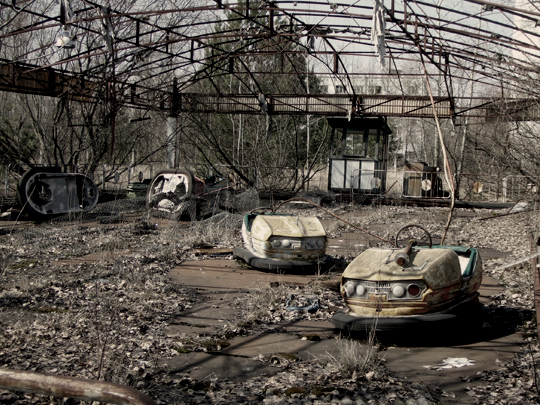
A report commissioned by Greenpeace asserted the accident could have resulted in between 10,000–200,000 additional deaths in Belarus, Russia, and Ukraine during the period between 1990 and 2004, according to the most recently published figures.
The remains of the No. 4 reactor building were enclosed in a large cover, often known as “The Sarcophagus”.
The aim of this was to reduce the spread of the remaining radioactive dust from the wreckage and to protect it from further weathering.
The Chernobyl accident was the most disastrous nuclear power plant accident in history, both in terms of cost and casualties.
The only other accident classified as a level 7 event on the International Nuclear Event Scale, was the Fukushima Daiichi nuclear disaster in Japan in 2011.
2 – Challenger 10 Space Shuttle Explodes 73 Seconds After Liftoff
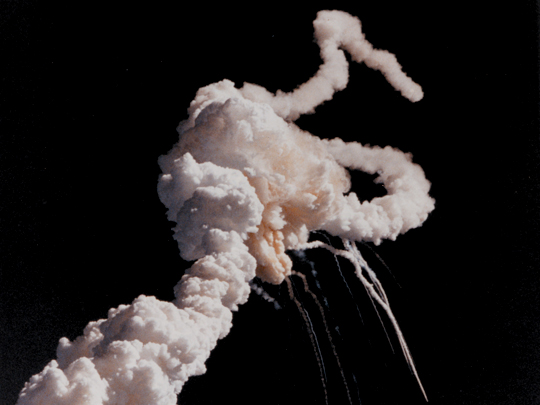
On January 28, 1986, the tenth flight of the NASA Space Shuttle Challenger broke apart 73 seconds into its flight, killing all seven crew members.
The spacecraft disintegrated over the Atlantic Ocean, off the coast of Cape Canaveral, Florida. It began after a joint in the right solid rocket booster failed at liftoff.
The failure of the joint was caused by the seals used in it not being designed to handle the unusually cold conditions at the launch.
NASA managers had disregarded warnings from engineers about the dangers of launching posed by the low temperatures of that morning and failed to adequately report these technical concerns to their superiors.
Several crew members are known to have survived the initial breakup of the spacecraft, but the impact of the crew compartment with the ocean surface at terminal velocity was too violent to be survivable.

NASA / Wikimedia Commons / CC-BY-SA-3.0 / GFDL
Tens of millions of Americans witnessed the launch live, primarily due to the presence of Payload Specialist Christa McAuliffe, who would have been the first teacher in space.
The full list of the Challenger crew members was Michael J. Smith, Dick Scobee, Ronald McNair, Ellison Onizuka, Christa McAuliffe, Gregory Jarvis, and Judith Resnik.
The disaster resulted in a 32-month hiatus in the shuttle program and the formation of a special commission appointed by U.S. President Ronald Reagan to investigate the accident.
It has often been used as a case study for engineering safety and workplace ethics.
3 – The Iran-Contra Affair Erupts
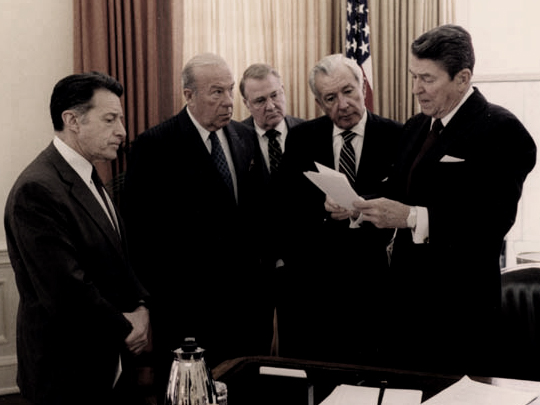
The Iran–Contra affair was a political scandal during the second term of Ronald Reagan’s presidency in the United States. Senior officials secretly facilitated the sale of arms to Iran, which was under an arms embargo.
The U.S. had hoped the proceeds would fund the Contras, who were anti-communist rebel groups fighting in opposition to the Sandinista regime in Nicaragua.
The U.S. Congress had previously prohibited government funding of the Contras.
The official justification for the arms shipments was that they were part of an operation to free seven American hostages being held in Lebanon by Hezbollah, a group with Iranian ties.
However, a congressional investigation found that arms sales to Iran had begun in 1981 before any hostages had been taken in Lebanon, therefore ruling out the explanation given by the Reagan administration.
In 1985, a portion of the weapon sales was diverted to fund the Contras by U.S. Lieutenant Colonel Oliver North. While President Reagan was a vocal supporter of the Contras, it is disputed whether he personally authorized the diversion of funds to the Contras.
On 3 November 1986, the Lebanese magazine Ash-Shiraa exposed the arrangement, with the first public report of a weapons-for-hostages deal.
It was only discovered after an airlift of guns was downed over Nicaragua.
Ten days later, President Reagan appeared on national television and confirmed that the weapons transfers had taken place, but denied that the United States was trading arms for hostages.
An investigation into the affair was impeded by Reagan administration officials as large volumes of documents were either destroyed or withheld.
On 4 March 1987, Reagan made a nationally televised address, taking full responsibility for the affair.
A subsequent investigation ended with 14 administration officials being indicted, including the Secretary of Defense Caspar Weinberger.
Of the resulting 11 convictions, some were vacated on appeal, while the rest were all pardoned during the presidency of George H. W. Bush.
4 – British Defense Secretary Michael Heseltine Resigns after the Westland Affair
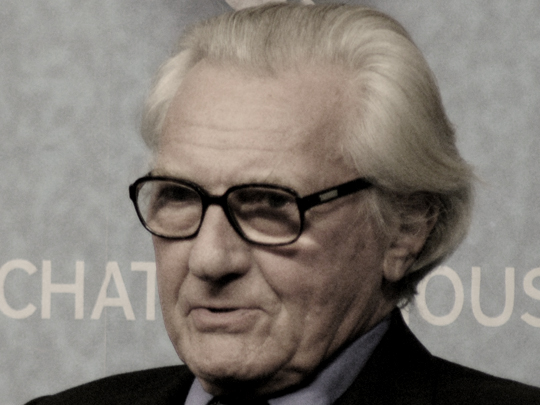
The Westland affair was a public cabinet dispute between the UK Prime Minister, Margaret Thatcher, and her Secretary of State for Defence, Michael Heseltine.
The argument was over the future of Westland Helicopters, Britain’s last helicopter manufacturer.
Heseltine favoured integrating Westland with a consortium of British, Italian, and French companies, while the Prime Minister wanted to see Westland merge with Sikorsky, an American company.
He refused to accept Thatcher’s choice, claiming she was denying a free ministerial discussion.
On 9 January 1986, after being ordered to cease campaigning for his European consortium, Heseltine resigned and walked out of a Cabinet meeting.
Trade and Industry Secretary Leon Brittan was then forced to resign for having leaked to the press a confidential letter critical of Heseltine, and for his role in trying to persuade British Aerospace to withdraw from Heseltine’s consortium.
The affair was an embarrassment to the government and undermined Thatcher’s reputation.
After retiring to the backbenches, Heseltine eventually challenged Thatcher’s leadership in November 1990, polling well enough to hasten her resignation as Prime Minister.
5 – Haiti’s President-for-Life Jean-Claude Duvalier Flees to France
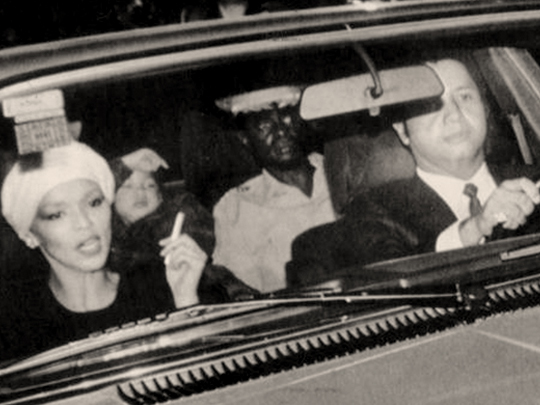
Duvalier was the President of Haiti from 1971, having succeeded his father François “Papa Doc” Duvalier as the ruler of Haiti after his death.
During his rule, thousands of Haitians were killed or tortured, with hundreds of thousands more fleeing the country, while he maintained a notoriously lavish lifestyle.
Following a popular uprising in Haiti, the Reagan administration, a number of his supporters and business leaders began to put pressure on Duvalier to renounce his rule and leave Haiti in January 1986.
The United States rejected a request for asylum from Duvalier but offered to assist with his departure.
On 30 January 1986, Duvalier accepted and was en route to the airport, but returned to his palace after gunfire erupted.
On 7 February 1986, the Duvaliers fled to France in a U.S. Air Force aircraft.
In Haiti, Lieutenant General Namphy became president of the interim governing council, promising elections, and democratic reforms.
Namphy had a reputation for his honesty, however, the council had difficulty in exerting its authority because of frequent strikes, rioting, demonstrations, and looting.
In November 1987, the first attempt at elections ended with over thirty voters killed.
In 1988, Namphy overthrew Leslie Manigat after he won an election that was widely considered fraudulent.
On 17 September 1988, Namphy was himself deposed by a group of young officers.









